Pamplona industrial space is transformed into serene private apartment
Spanish architecture studio Arrova transforms an industrial space in Pamplona into a private apartment that is a haven of calm

The traditional loft apartment arose out of the transformation of an industrial space into a residential one, bringing a commercial scale and space to the domestic realm. Over the years, the term has been much debased as square footages shrink and oxymoronic terms like ‘new-build lofts’ creep onto the market.
It’s therefore refreshing to find a post-industrial residence that retains all the character of the original space.
Loft A: converted industrial space in Pamplona

Loft A began life as a motorbike repair shop in Pamplona’s Milagrosa district, south of the city centre. Designed by Cristina Vergara and Enrique Rojo of Arrova (Atelier Rojo-Vergara), the project was intended to be a prototype for the area, which has a large number of abandoned and redundant industrial properties. ‘Their transformation would greatly help to revitalise the area,’ the architects write.
Arrova was set up in 2018 and has offices in Pamplona and Zurich. Before that, Rojo studied in Spain, the UK and Switzerland, and worked at the Zurich office of Raumbureau. Vergara also studied in Spain, before working for David Chipperfield Architects in Shanghai and EM2N Architekten in Zurich.

The first job was to strip out all the unnecessary internal elements, opening up the space to its full extent. The reinforced concrete structure is therefore laid bare and forms the bones of the composition, with the angle beams and columns setting up a rhythm within the space.
The newly liberated interior enables light to come in from both ends, with the original entrance turned into a semi-private porch space that provides an arrival sequence, shielding the living space behind a wall of glass and a sheer floor-to-ceiling curtain.

The floorplan is simplicity itself, maximising every available square metre by pushing all the services – kitchen and bathroom – to the edge of the structure. A central plinth, raised six steps above the principal floor level, divides the space.
Wallpaper* Newsletter
Receive our daily digest of inspiration, escapism and design stories from around the world direct to your inbox.
Step down and you enter a sunken kitchen and study area, with iroko wood counters set beneath the floor slab and glass screens to bring in light. The study is lined with raw shuttered concrete, left unadorned to contrast with the white-painted original frame. The original foundations are also laid bare.

Rojo describes it as a ‘domestic stage pit’, a counterpoint to the theatrical podium for living above it. The slim aluminium-framed staircases that provide access to the podium are also movable, allowing for different configurations. A sleeping area is located to the rear, behind a large wooden screen, with sight lines throughout the whole apartment interior preserved wherever possible.
‘This strategy of undefined spaces is what allows the user to appropriate the space according to their needs,’ say the architects. ‘After all, a loft must be, as its etymology indicates, an open place, a timeless place in which to live and work in a flexible manner.’




INFORMATION
Arrova.eu
Jonathan Bell has written for Wallpaper* magazine since 1999, covering everything from architecture and transport design to books, tech and graphic design. He is now the magazine’s Transport and Technology Editor. Jonathan has written and edited 15 books, including Concept Car Design, 21st Century House, and The New Modern House. He is also the host of Wallpaper’s first podcast.
-
 The new Ford Capri wants to tap a vein of Gen X nostalgia. Does it succeed?
The new Ford Capri wants to tap a vein of Gen X nostalgia. Does it succeed?We ask if the all-electric Ford Capri can capture the swagger of its much-loved but rather oafish predecessor
By Guy Bird Published
-
 Rug designer Sibylle de Tavernost’s homage to Fernard Léger
Rug designer Sibylle de Tavernost’s homage to Fernard LégerAbstract modern art, craft heritage and contemporary life fuse in Sibylle de Tavernost's new limited-edition rugs
By Harriet Thorpe Published
-
 Private gallery Stiftung Froehlich in Stuttgart stands out with an organic, cloud-shaped top
Private gallery Stiftung Froehlich in Stuttgart stands out with an organic, cloud-shaped topBlue-sky thinking elevates Stiftung Froehlich, a purpose-built gallery for the Froehlich Foundation’s art collection near Stuttgart by Gabriele Glöckler
By Hili Perlson Published
-
 Bodegas Faustino Winery celebrates process through its versatile vaulted visitor centre
Bodegas Faustino Winery celebrates process through its versatile vaulted visitor centreBodegas Faustino Winery completes extension by Foster + Partners in Spain, marking a new chapter to the long-standing history between the architecture practice and their client
By Ellie Stathaki Published
-
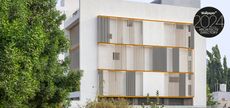 Playball Studio's architecture balances the organic and the technical
Playball Studio's architecture balances the organic and the technicalPlayball Studio, a young Indo-Spanish design practice, features in the Wallpaper* Architects’ Directory 2024
By Pallavi Mehra Published
-
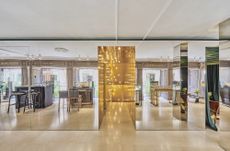 In Palma, beloved watch boutique Relojeria Alemana gets a dramatic revamp
In Palma, beloved watch boutique Relojeria Alemana gets a dramatic revampEdificio RA for Relojeria Alemana has been redesigned by OHLAB, refreshing a historical landmark in Palma, Mallorca with a 21st-century twist
By Ellie Stathaki Published
-
 Santiago Bernabéu stadium redesign: a sneak peek into the works
Santiago Bernabéu stadium redesign: a sneak peek into the worksWe take a tour of the Santiago Bernabéu stadium in Madrid, as the beloved sports facility is being given a refresh
By Agnish Ray Published
-
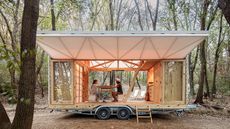 MOCA is a self-sufficient mobile home offering freedom to work (and roam)
MOCA is a self-sufficient mobile home offering freedom to work (and roam)MOCA (Mobile Catalyst) is a sustainable mobile home designed by the Institute for Advanced Architecture of Catalonia, and taking remote working to a new level
By Tianna Williams Published
-
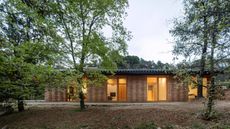 Low-energy house in Catalonia minimises its footprint to make the most of its site
Low-energy house in Catalonia minimises its footprint to make the most of its siteAlventosa Morell Arquitectes’ low-energy house in Catalonia nestles into the landscape
By Jonathan Bell Published
-
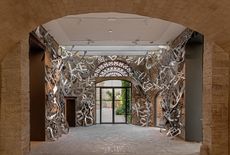 Hortensia Herrero Art Centre puts Valencia on the contemporary art map
Hortensia Herrero Art Centre puts Valencia on the contemporary art mapHortensia Herrero Art Centre launches in Valencia, offering a home for contemporary art to sit side by side with archaeological treasures
By Blaire Dessent Published
-
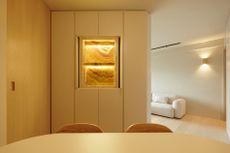 Collective, Hong Kong and Spain: Wallpaper* Architects Directory 2023
Collective, Hong Kong and Spain: Wallpaper* Architects Directory 2023With bases in Hong Kong and Spain, Collective joins the Wallpaper* Architects’ Directory 2023, our annual round-up of exciting emerging architecture studios
By Ellie Stathaki Published